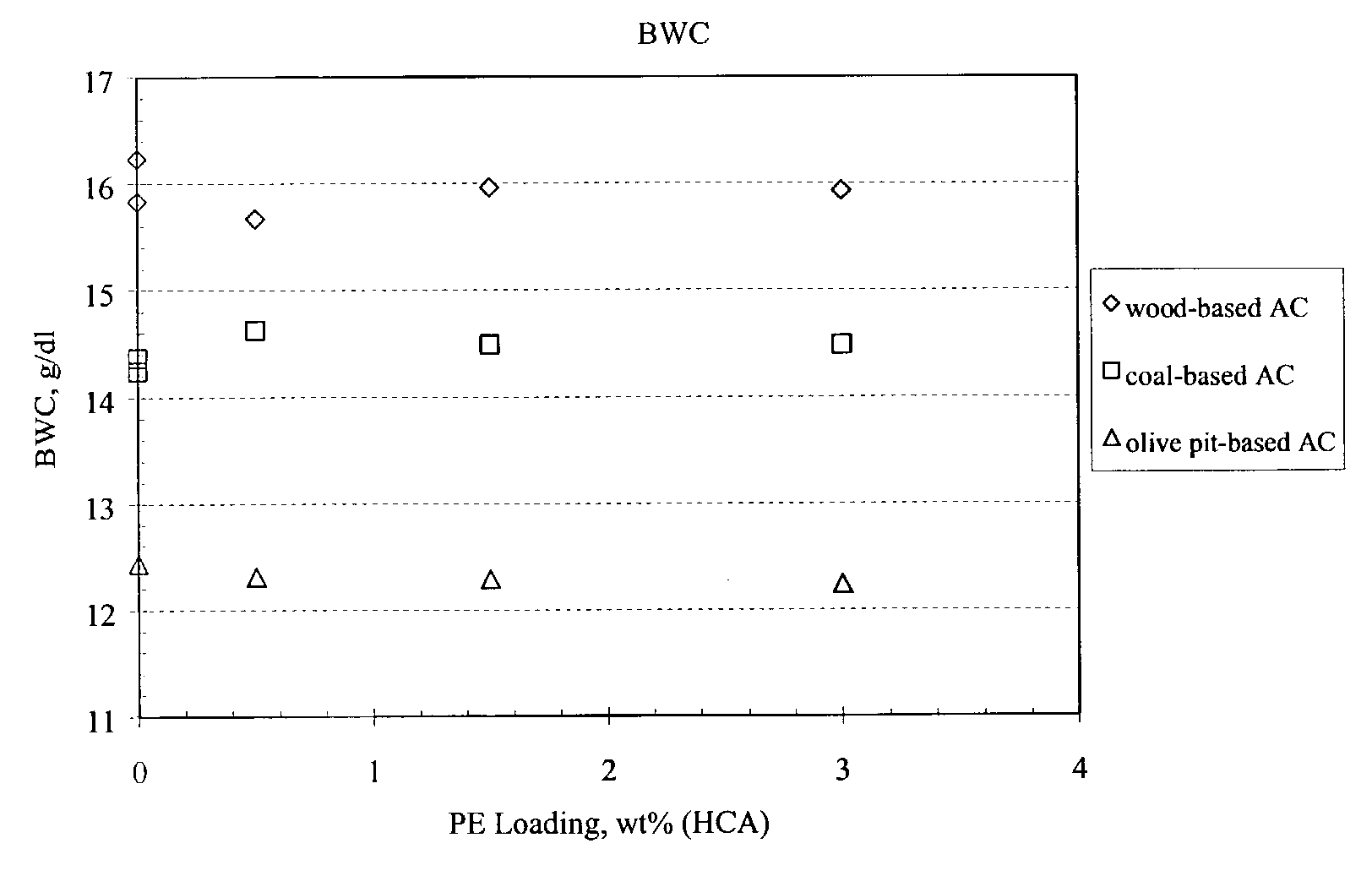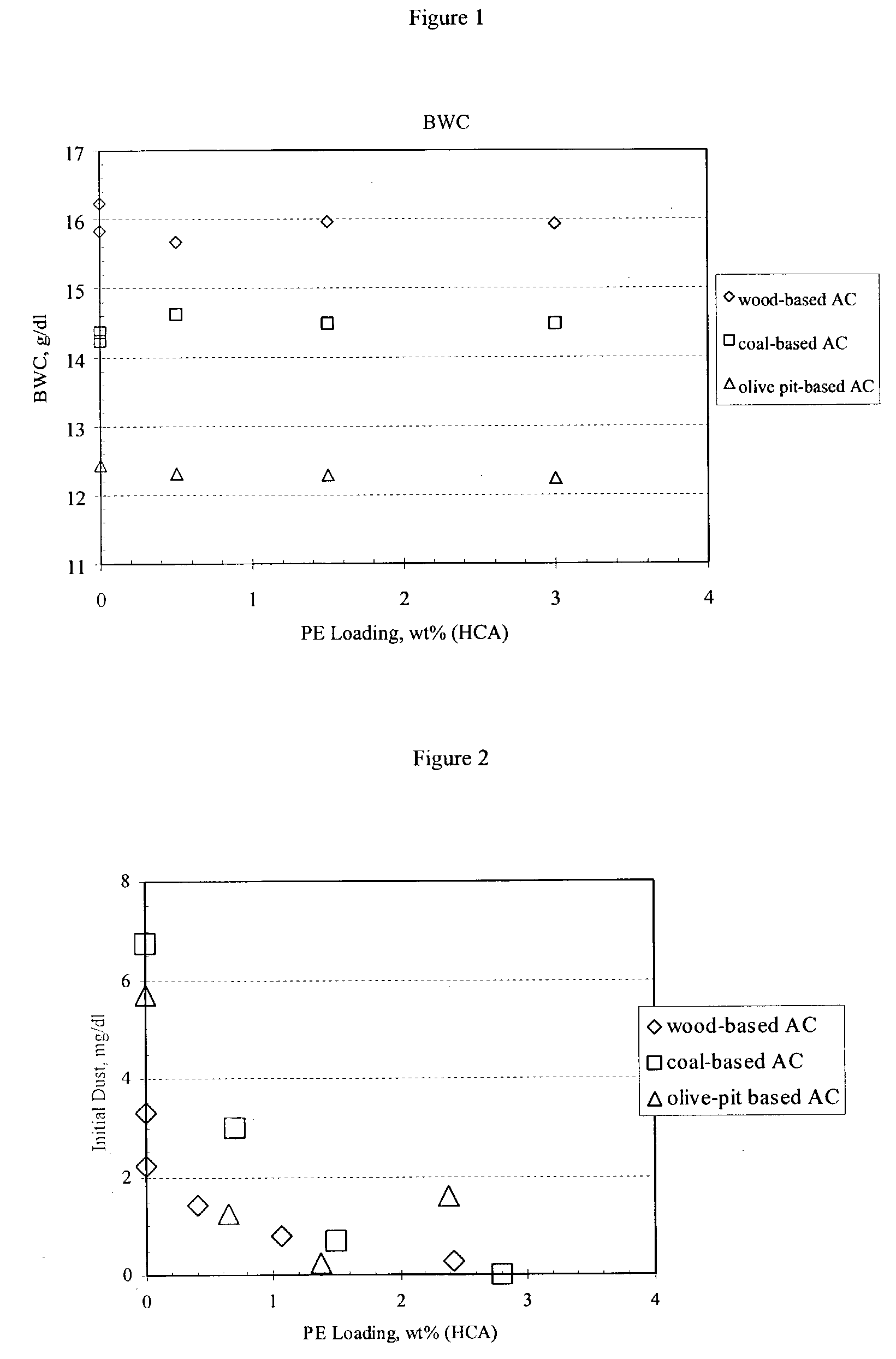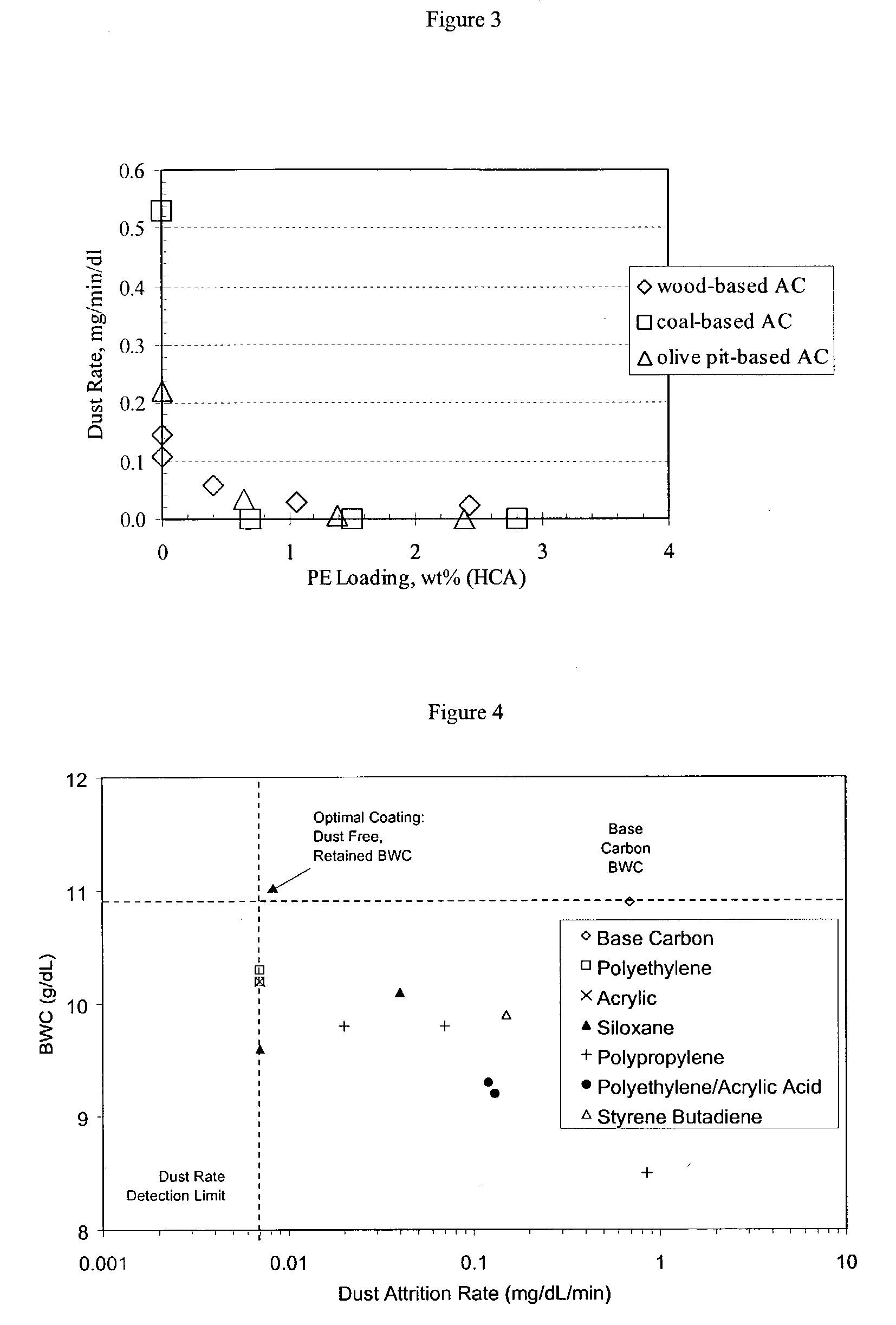Coated activated carbon for automotive emission control
a technology of activated carbon and canisters, applied in the direction of inorganic chemistry, natural mineral layered products, synthetic resin layered products, etc., can solve the problems of dust loss, subject to some degradation before and during use, dust loss, etc., to reduce the adsorption velocity or capacity of activated carbon, improve the performance of canisters in emission control, and reduce the effect of significant reduction or essentially elimination
- Summary
- Abstract
- Description
- Claims
- Application Information
AI Technical Summary
Benefits of technology
Problems solved by technology
Method used
Image
Examples
example 1
[0036]Two types of coatings were applied to pellets of Westvaco Corporation BAX 1100 activated carbon that provided dust free carbons: a high-density polyethylene (ChemCor polyethylene emulsion Poly Emulsion 325N35) and aminoethylaminopropylpolysiloxane (General Electric silicone emulsion SM2059). Other polymers, including polypropylene and polystyrene, may be employed as alternative coating materials. Coating properties, such as abrasion resistance, permeability, and porosity, may also be further enhanced for a particular class of polymer by selecting, materials with different molecular weight, density, particle size, and / or degree of cross-linking.
[0037]The activated carbon pellets were coated by tumbling in a rotating cylinder and initially heated to 250° F. (121° C.) using a hot air gun. An emulsion of the polymer was then sprayed on the carbon in successive doses as the activated carbon was maintained at about 150° F. (66° C.) under the hot air flow. (The emulsion of the polyet...
example 2
[0047]Further tests show that similarly coated activated carbon pellets (Westvaco Corporation BAX 1500) exhibit increased abrasion resistance, as measured by a standard pellet hardness test (CTC Procedure 960–130), which is a modified version of ASTM D3802–79 (ball pan hardness). The pellet hardness test involves shaking the sample (2 mm extruded carbon pellets) in a Ro-Tap Sieve Shaking Machine with stainless steel balls (10 of ¾ inch diameter and 20 of ½ inch diameter) and measuring the amount of pellet breakage in terms of the change in mean particle size of particles collected in a special pan at the bottom of an equivalent 6 (full height) high sieve nest (consisting of #6, #8, #10, #12, #14, #18, and #60). Step 1: a standard performed on 100 grams of sample material and the fractions of material on each sieve is weighed. Step 2: then the fractions are combined in the special pan with the 30 steel balls, and the special pan is shaken on the Ro-Tap for 20 minutes, after which the...
example 3
[0052]To show that the benefit of coated active carbon dust attrition reduction or elimination is applicable to a variety of commercial activated carbons, samples of a shaped commercial coal-based activated carbon (Kuraray 3GX) and a shaped commercial olive pit-based activated carbon pellets (Norit CNR 115) were coated with polyethylene (9.0 wt % emulsion solids) and compared with a similarly coated shaped commercial wood-based activated carbon (Westvaco Corporation BAX 1500). The polymer coating has the same benefits as previously shown with wood-based BAX 1100 and BAX 1500 pellets for reducing dust without significant effect on key properties.
[0053]The coatings were applied by the previously described method of Example 1. A de-dusting step was not applied prior to analyses. The polymer loadings (coating wt. %) were determined by heating samples to 932° F. (500° C.) and measuring the amount of volatilized components with a hydrocarbon analyzer calibrated with carbons of known polye...
PUM
| Property | Measurement | Unit |
|---|---|---|
| Fraction | aaaaa | aaaaa |
| Fraction | aaaaa | aaaaa |
| Fraction | aaaaa | aaaaa |
Abstract
Description
Claims
Application Information
 Login to View More
Login to View More - R&D
- Intellectual Property
- Life Sciences
- Materials
- Tech Scout
- Unparalleled Data Quality
- Higher Quality Content
- 60% Fewer Hallucinations
Browse by: Latest US Patents, China's latest patents, Technical Efficacy Thesaurus, Application Domain, Technology Topic, Popular Technical Reports.
© 2025 PatSnap. All rights reserved.Legal|Privacy policy|Modern Slavery Act Transparency Statement|Sitemap|About US| Contact US: help@patsnap.com



